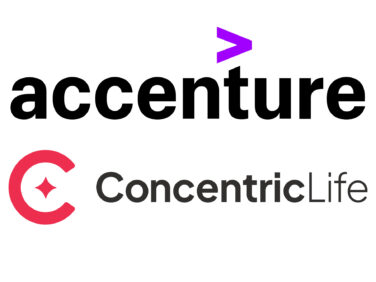How antibody drug-conjugates (ADC) can penetrate the defenses of some of the hardest to treat cancers.
According to legend, there was once a city on the coast of Asia called Troy whose borders could not be crossed or their defenses breached. The ability of Troy’s inhabitants to keep attackers at bay long enough to build up strategies and mechanisms to way to fight back and win battles was like no other nation. Many adversaries had tried to breach their walls and failed—that is, of course, until the Greeks came along with their Trojan horse.
During the 10-year war between the Greeks and the Trojans, not even Greece’s greatest hero Achilles could lead them to victory. The legend has it (some of which was recounted in Homer’s Odyssey) that after Achilles died from an arrow piercing his ankle, Odysseus devised the plan that ultimately doomed the Trojans. Disguised as a peace offering to the goddess Athena, the Greeks left a large, hollowed out wooden horse in front of the walls of Troy. In celebration, the Trojans wheeled the gift into the city. You probably know the rest of the story: The Greek army was hiding inside the wooden horse’s belly and they ultimately emerged to kill the unsuspecting Trojans, burn the city and win the war.
After working in the oncology space for nearly a decade, I see a strong parallel between the walls of Troy and the defenses of many cancers. These cancer defenses, also known as the hallmarks of cancer, comprise six biological capabilities acquired during cancer development. Some cancers recruit other cells to protect the tumor-like walls; others alter the way they reproduce or self-regulate prevent apoptosis—as if a gift of immortality from the gods. Cancer cells may induce angiogenesis (formation of new blood vessels), similar to an army having a supply line into the city to ensure the growth and strength of its troops. Or cancer may adjust its tactics from defense to offense through invasion and metastasis. Underlying each of these hallmarks is redundancy in cell signaling, which ensures that inhibiting on key path- ways will not shut off the hallmark capability. It is also possible that over time the cell may adapt either through mutation, epigenetic reprogramming, or remodeling of the tumor environment; by reestablishing the functional capability through an alternative path becoming resistant to treatment; or because a patient relapses.
WINNING THE CANCER WAR
Forging an attack against the disease is the biggest battle a patient with cancer will face. And for years, the weapons to fight these battles were often too ineffective. Either the treatments lacked the potency to breach the cancer’s enemy lines or they were too toxic for the patient to remain a healthy trooper. According to the latest data on nationwide death rates from cancer, overall mortality from cancer declined from 1999 to 2008, maintaining a trend seen since the early 1990s1. Improvements in survival can be attributed to a number of factors including advancements in treatments, better targeting, and minimizing damage to healthy cells. The targeted therapies introduced in the late 1990s were designed to attack the processes that controlled cell growth, division, metastasis, and cell signaling rather than—as chemotherapy did—by killing cells that were in the process of replicating. Targeted therapy could be described as a guided, targeted strike rather than the dropping of a bomb.
Today, when considering all cancers, about 65% of patients will be cured (having no evidence of disease five years after being diagnosed), but that means over one-third of those diagnosed will face an insurmountable disease. Thankfully, progress is being made. One technology that many are excited about is antibody drug-conjugates (ADC). I like to think of them as a Trojan horse. Antibody drug-conjugates are comprised of three components: a monoclonal antibody and a synthetic linker that covalently binds the third component, a cytotoxic drug, to the monoclonal antibody. The linkage of monoclonal antibodies to potent cytotoxins confers higher tumor selectivity to these cytotoxic drugs while delivering a more potent drug. In some ADCs, the monoclonal antibody may retain its independent anticancer activities.
Much like the cleverness of the Greeks, an ADC does not need to carry an over-abundance of force (toxicity); the cancer cell naturally internalizes the monoclonal anti- body. Let’s say it sees it as a gift. After the ADC is internalized, the linker is cleaved by lysosomal enzymes releasing the payload. The release of the cytotoxin leads to cell cycle arrest and ultimately cell death. The battle is won from within.
As with any war, fighting the battle from inside enemy lines reduces the amount of energy (potency) and minimizes casualties (side-effects). Both are target outcomes for future ADCs. ADCs are using some of the most potent cytotoxins available like tubulin polymerization inhibitors (maytansines: DM1, DM4; aurista- tins: MMAE, MMAF) and DNA damaging agents (calicheamicin, duocarmycin, and doxorubicin) but at lower doses since the drug is delivered to the target cell directly. Consequently, reducing the amount of cytotoxin and releasing it only inside the target cells significantly reduces the systemic effects of the therapy. ADCs increase the potent cytotoxic agent to the tumor, while limiting exposure to the tissue.
As with all great battle strategies, it is very important that the tactics be scalable and replicable. Although the Greeks’ reign took a turn for the worse after their victory over Troy, it’s unlikely that the great Trojan horse would have been deployed again against another enemy. Well, the same holds true for treating cancer. Every cancer will have its own unique Trojan horse. As for ADCs, it’s very important that researchers continue to explore and exploit ideal monoclonal antibodies and cell surface antigens. Antigens must have high tumor cell selectivity to limit toxicity and off-target effects (less evident). A plethora of tumor-associated antigens have been investigated in pre-clinical models and in clinical trials including antigens over-expressed in B-cells (e.g., CD20, CD22, CD40, CD79), T-cells (CD25, CD30), carcinoma cells (HER2, EGFR, EpCAM, EphB2, PSMA, Cripto), endothelial (endoglin), or stroma cells (fibroblast activated protein)—just to name a few2.
THE ADC MARKET Currently, the concept of antibody drug-conjugates is much greater than the application. An early ADC, BR96-doxorubicin, was unsuccessful, even though it utilized a known successful chemotherapy, doxorubicin, because it lost potency in the construct of an ADC. In addition, the drug suffered from toxicity due to an unstable linker which released the drug prematurely and a target antigen that was also present on non-tumor cells, contributing to its lower potency and toxicity. These shortcomings led to the development of ADCs with a more potent cytotoxic. The first FDA-approved ADC was Pfizer’s Mylotarg, a monoclonal antibody targeting CD33 that included the more potent cytotoxic calicheamicin to treat acute myeloid leukemia (AML). Mylotarg was an accelerated approval and, as such, was required to provide confirmatory trials of the drug’s benefit; however, it failed to prove a benefit in survival. Rather, according to the FDA there was an increase in the number of deaths as well as increased toxicity over the initial trials and, therefore, it was voluntarily withdrawn from the market. Mylotarg’s shortcomings may be due to a non-specific drug release through linker instability, demonstrating the importance of not only a potent cytotoxic but also of a stable linker3.
Many ADCs have entered the clinical trials since Mylotarg’s approval and technology has improved since the original ADCs. Advancements have been made in the choice of target antigens (expression in cancer cells with limited to no expression on normal cells), including less immunogenic antibodies, improved ability of an ADC to localize to target tissue and be internalized into the targeted cell, increased stability of the linker, and potency of the cytotoxic drug all contribute to the success of the newer ADCs4.
Seattle Genetics’ Adectris was the last ADC approved by the FDA, back in 2011, and it is the only ADC currently on the market. Adcetris is comprised of a monoclonal antibody that targets CD30, a protease cleavable linker and monomethyl auristate E (MMAE), a microtubule-disrupting agent. Adcetris is currently approved for the treatment of Hodgkin’s lymphoma after failure of autologous stem cell transplant (ASCT), for patients who are not ASCT candidates after failure of at least two multiagent chemotherapy regimens, and for systemic anaplastic large cell lymphoma (sALCL) after failure of at least one multiagent chemotherapy regimen. Adectris was the first drug approved in over 30 years and its approval was based on its response rate in two pivotal phase II trials, one in cHL and the other in sALCL.
The most promising ADC in the pipeline is trastuzumab emtansine (TDM-1), comprised of the humanized antibody trastuzumab and the potent antimicrotubule agent TDM-1 (derivative of maytansine), which recently showed an improved progression-free survival (PFS) versus Xeloda and Tykerb with a trend toward survival based on an interim analysis in HER2-positve breast cancer5. There are about 30 ADCs currently in active development, according to Citeline, a leading research authority on pharmaceutical clinical trials and drug intelligence. The future looks very promising. Let’s all hope that someday someone will write about the legend of the ADC and how it breached the defenses of many cancers leading patients to victory.
REFERENCES:
1. Eheman C, Henley J, Ballard-Barbash R, et al. Annual report to the nation on the status of cancer, 1975-2008, featuring cancers associated with excess weight and lack of sufficient physical activity. Cancer. 2012; 2338-2366.
2. Beck A, Haeuw JF, Wurch T, Goetsch L, Bailly C, Corvaia N. The next generation of antibody-drug conjugates comes of age. Discov Med. 2010; 10:329-39
3. Senter PD. Potent antibody drug conjugates for cancer therapy. Current Opinion in Chemical Biology. 2009; 13:235-244.
4. Senter PD. Potent antibody drug conjugates for cancer therapy. Current Opinion in Chemical Biology. 2009; 13:235-244.
Polson AG, HO WY, Ramakrishnan V. Investigational antibody- drug conjugates for hematological malignancies. Expert Opinion. 2011; 20(1):75-85.
Chari RV. Targeted cancer therapy: conferring specificity to cytotoxic drugs. Accounts of Chem Res. 2008; 41(1):98-107.
Alley SC, Okeley NM, Senter PD. Antibody-drug conjugates: targeted drug delivery for cancer. Curr Opin Chem Biol. 2010; 14(4):529-537.
5. Blackwell KL, Miles D, Gianni L, et al. Primary results from EMILIA, a phase III study of trastuzumab emtansine (T-DM1) versus capecitabine (X) and lapatinib (L) in HER2-positive locally advanced or metastatic breast cancer (MBC) previously treated with trastuzumab (T) and a taxane. Presented at: The 48th ASCO Annual Meeting: June 1–5, 2012; Chicago, Illinois.






